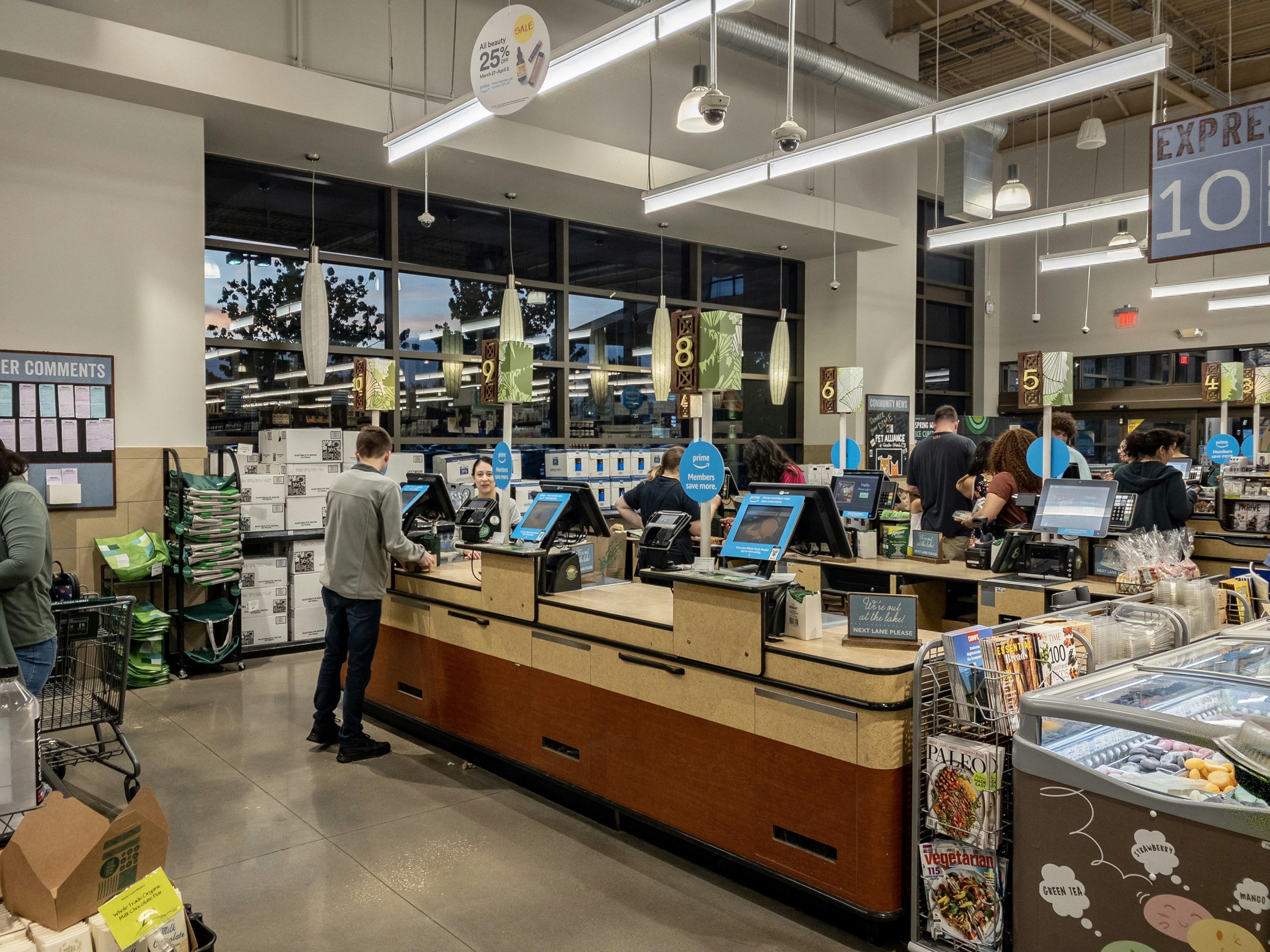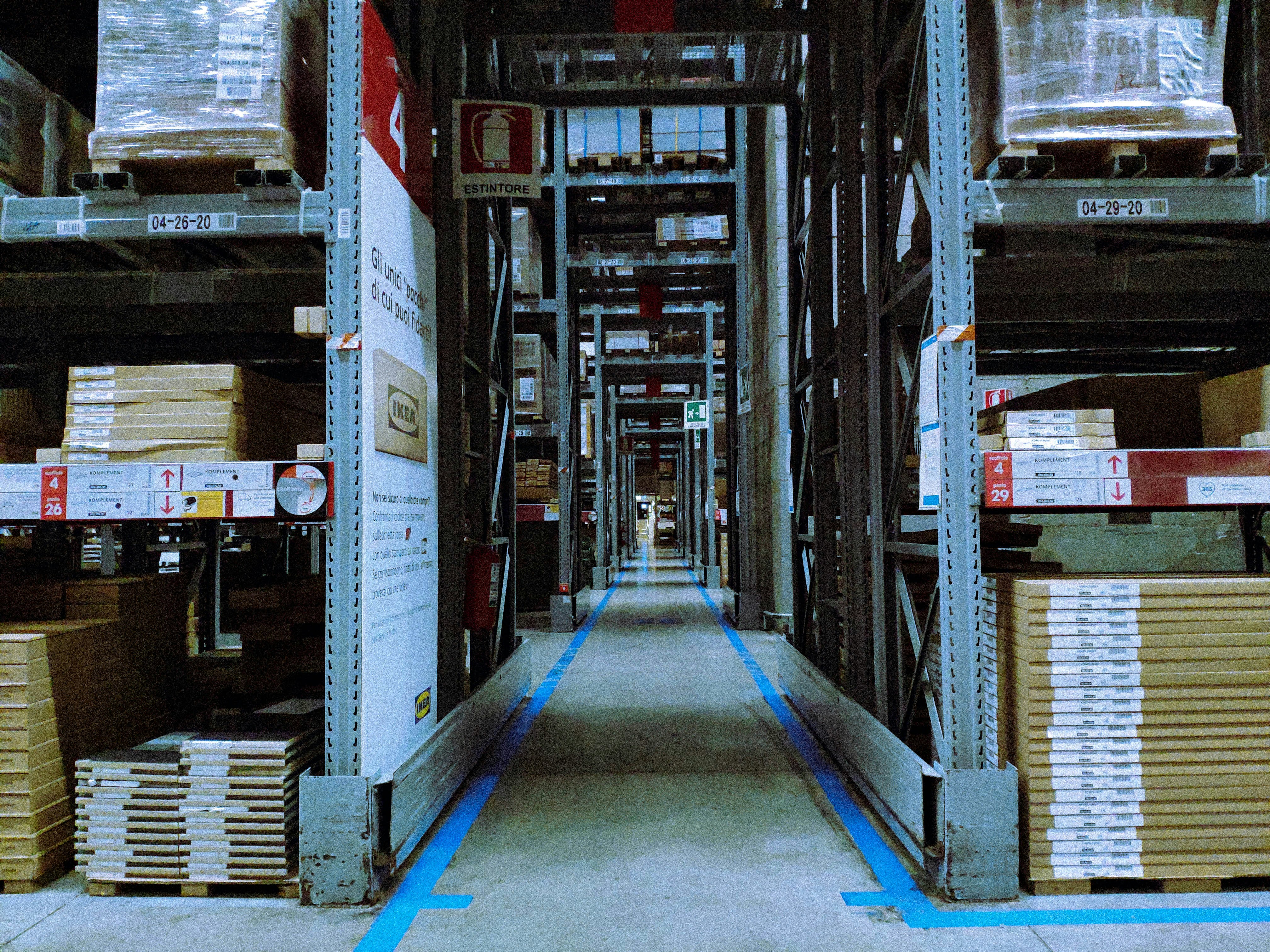Introduction to QR Code Menus
The advent of technology in the dining industry has catalyzed various innovations aimed at enhancing the customer experience, one of the most notable being the implementation of QR code menus in restaurants. QR codes, or Quick Response codes, are two-dimensional barcodes that can be scanned using smartphones to access digital information, making them a convenient choice for modern dining. As the world grappled with the impact of the COVID-19 pandemic, many establishments transitioned from traditional paper menus to these digital alternatives. This shift was primarily driven by the need for contactless services to ensure health and safety, but it also marked a transformation in how customers interact with restaurant offerings.
In recent years, QR code menus have gained immense popularity due to their convenience and efficiency. Diners can swiftly scan a code placed on a table or at the entrance of a restaurant, bringing up the menu on their devices. This approach not only minimizes physical contact but also accommodates dynamic menu changes without the need for reprinting. Moreover, the integration of multimedia elements, such as images and detailed descriptions, enhances the overall dining experience by providing customers with more engaging content.
The transition to QR code menus serves a dual purpose: it addresses immediate concerns related to hygiene while simultaneously illustrating the restaurant’s adaptability in an ever-evolving technological landscape. This system also offers restaurants the ability to gather customer data and feedback more effectively, enabling them to fine-tune their menus and improve service. As the hospitality sector continues to navigate the post-pandemic world, the rise of QR code menus stands as a testament to innovation, emphasizing the need for a seamless and safe dining experience for all.
The Technology Behind QR Codes
QR codes, short for Quick Response codes, are two-dimensional barcodes that store information in a grid pattern. They can be scanned using various devices, most commonly smartphones and tablets equipped with a camera. The technology behind QR codes is based on a concept called ‘matrix barcode,’ which utilizes small black squares arranged on a white grid. This design allows them to hold significantly more information than traditional barcodes.
Creating a QR code involves a straightforward process. Firstly, the desired data (in this case, a link to a restaurant’s digital menu) is converted into a binary number, which is then represented in a pattern of black and white squares. Various online tools and software are available to generate these codes effortlessly. Some QR code generators even allow customization with logos or specific colors while adhering to the fundamental patterns necessary for accurate scanning.
Once a QR code is generated, it can be printed on physical menus, table tents, or displayed on digital screens within the restaurant. To access the menu, customers simply launch their camera application or a dedicated QR code scanning app on their device. The camera recognizes the pattern and translates the binary information back into its original form, instantly redirecting the user to the restaurant’s digital menu. This seamless process eliminates the need for physical menus, offering a contactless dining experience that enhances hygiene.
The types of devices that can effectively scan QR codes range from smartphones running iOS or Android operating systems to tablets equipped with camera functionality. Additionally, many modern devices are designed with built-in QR code scanning capabilities in their native camera applications, ensuring that the technology remains accessible to a broad audience. QR codes have thus transformed the dining experience, providing an innovative solution for restaurants that enhances both convenience and safety.
Benefits of QR Code Menus for Restaurants
The adoption of QR code menus in restaurants has garnered significant attention in recent years, offering multifaceted advantages that can transform the dining experience. One of the primary benefits is cost savings, particularly in printing and reprinting physical menus. With traditional menus, any change to the offerings necessitates updated print runs, which can be costly and time-consuming. QR menus, on the other hand, enable immediate updates to the digital menu without any additional printing expenses, allowing restaurants to remain agile and responsive to changes in inventory or seasonal offerings.
Another significant advantage of QR code menus is their hygiene benefits. In the wake of increased health concerns due to the COVID-19 pandemic, diners have become more aware of cleanliness in dining environments. QR code menus minimize physical contact by allowing customers to scan and view the menu on their personal devices, eliminating the need for shared menus. This practice not only supports health protocols but also enhances the overall dining atmosphere by making it feel safer and more sanitary.
Furthermore, QR code menus can significantly enhance the customer experience. They can be designed for easy navigation, allowing patrons to find their desired dishes quickly. In addition, the integration of multimedia elements such as photographs and videos can elevate the dining experience by providing visual context to the menu items. This engagement can lead to increased customer satisfaction and potentially higher sales as diners are more likely to order dishes that they find appealing through visual representation.
Lastly, QR code menus afford restaurants the ability to gather data and insights about customer preferences. By analyzing which items are frequently viewed or ordered via the digital menu, restaurant owners can make informed decisions about their offerings. Overall, the implementation of QR code menus presents a valuable opportunity for restaurants to innovate and optimize their operations while enhancing the dining experience for customers.
Benefits for Customers
The advent of QR code menus has transformed the dining experience significantly, providing numerous benefits for customers. One of the most notable advantages is the ease of access these digital menus offer. With a simple scan from a smartphone, diners can quickly view the full menu without the need for physical menus, which can often be outdated or unavailable, especially during peak hours. This immediacy enhances the overall dining experience, allowing guests to spend less time waiting and more time enjoying their meals.
Another significant benefit is the ability to view up-to-date offerings and specials. Restaurants can utilize QR code menus to make real-time changes to their offerings, ensuring that customers are always aware of the latest dishes, seasonal items, or changes in availability. This transparency fosters trust between the diner and the establishment, as patrons can feel confident that they are making informed choices based on current information.
Additionally, QR code menus hold great potential for customization, allowing customers to tailor their orders according to dietary restrictions or personal preferences. By tapping into the system’s functionalities, diners can easily modify their selections, choose portion sizes, or indicate allergies. This level of customization caters to a diverse range of consumer needs, promoting inclusivity within the dining environment.
Convenience is a key aspect of the QR code menu experience. Customers can browse the menu at their own pace, review ingredients or dish descriptions, and order directly from their phones. This direct ordering feature not only streamlines the process but also minimizes wait times, particularly beneficial for busy restaurants. Furthermore, consider that QR codes can provide accessibility features. For example, enlarging text or offering multiple language options can accommodate various customer groups, fostering an inclusive atmosphere that enhances the overall dining experience.
Limitations and Challenges of QR Code Menus
While QR code menus offer a range of benefits for modern dining experiences, they are not without limitations and challenges that can affect both the restaurant and the customers. One significant barrier to widespread adoption is the reliance on smartphones. Not all diners possess a smartphone capable of scanning QR codes, particularly older generations who may be less familiar with contemporary technology. This divide raises concerns about accessibility for a portion of the customer base, which can lead to a diminished dining experience for those who are unable or unwilling to engage with such digital solutions.
Furthermore, restaurants must consider the implications of internet connectivity. QR code menus typically require customers to have an internet connection to access the menu, which may not be feasible in areas with poor cellular service or in establishments where Wi-Fi is limited or unsecured. In such cases, guests may become frustrated with their inability to access essential information about menu items, thus potentially compromising their overall experience.
Moreover, the integration of technology into the dining experience can detract from the personal touch often associated with dining out. Guests may find themselves more focused on their devices than engaging with their dining companions or staff, which could lead to a more impersonal atmosphere. The social aspect of dining, which has traditionally played a crucial role in the enjoyment of meals, may be overshadowed by the mechanics of technology and the ease of scrolling through a digital menu.
Finally, there are concerns about data privacy and security, as guests may hesitate to connect to public networks or share personal information through apps associated with QR code menus. These limitations highlight the need for restaurants to carefully weigh the benefits alongside the challenges when implementing QR technology into their dining experiences.
Implementing QR Code Menus: Best Practices
As restaurants continue to embrace the digital transformation, implementing QR code menus offers a practical solution to enhance the dining experience. Restaurant owners looking to adopt this technology should consider a number of best practices to ensure a seamless transition.
Firstly, design plays a vital role in the effectiveness of QR code menus. It is essential to create visually appealing and easy-to-navigate digital menus. The design should be consistent with the restaurant’s branding and include legible fonts and high-resolution images of food items. Additionally, consider using intuitive layouts that allow customers to easily find their desired dishes. Clear categorization of menu items, such as appetizers, mains, and desserts, can enhance usability.
Once the design is finalized, promoting the QR code menus is crucial. Placing prominently displayed signs at entry points, tables, or on menus themselves that instruct customers to scan the QR code is recommended. Additionally, staff may engage diners by offering to explain how to access the menu, thus ensuring everyone feels comfortable using this technology. Consider also leveraging social media and email marketing to inform frequent customers about the new QR code system.
User-friendliness is another key aspect to prioritize. Ensuring that the QR codes lead to mobile-optimized menus will help prevent technical issues. Test the codes on various devices and ensure they operate smoothly. Including alternative ways to access the menu, such as a traditional paper version or an ‘order by phone’ option, can accommodate all customer preferences.
Lastly, maintaining up-to-date information on the menu is imperative. Regularly reviewing and updating menu items, prices, and descriptions helps keep content fresh and relevant. This ongoing attention to detail not only enhances the customer experience but also encourages repeat visits as diners will feel assured of the accuracy of information provided. Implementing these best practices can result in a successful transition to QR code menus, improving efficiency and customer satisfaction in the modern dining landscape.
Case Studies: Restaurants Successfully Using QR Code Menus
The implementation of QR code menus has gained traction among various establishments, showcasing its adaptability and effectiveness in enhancing the dining experience. One notable example is a local Italian restaurant, Trattoria Bella, which shifted to QR code menus during the pandemic. Not only did this transition minimize physical contact, but it also streamlined ordering and payment processes. Customers expressed appreciation for the convenience and safety, with feedback highlighting the ease of accessing the menu from their smartphones without the need for physical menus.
Another successful case can be found at a popular sushi bar, Sushiya Delight. By utilizing QR code menus, the restaurant was able to present a vibrant digital menu filled with high-quality images and detailed descriptions of dishes, which significantly increased customer engagement. Additionally, they incorporated allergen information directly into the digital format, allowing guests to make informed choices quickly. This innovation led to a notable increase in customer satisfaction ratings, as patrons felt informed and reassured while dining.
A notable chain that adopted QR code menus is The Coffee Hut, which leveraged them to revamp their service model. The café tailored its QR codes for both in-shop and delivery orders, providing a cohesive experience regardless of how customers chose to order. Customer feedback indicated that the intuitive design of their QR code interface not only reduced wait times during peak hours but also encouraged patrons to try new items via promotional bundles exclusively available through the code. By analyzing usage statistics, The Coffee Hut was able to adapt menu offerings to reflect customer preferences, illustrating the potential evolvement in dining trends from such data-driven approaches.
These case studies highlight how various establishments have navigated the transition to QR code menus, yielding positive outcomes in customer experience, operational efficiency, and engagement. As more restaurants embrace this modern approach, it will be interesting to observe the evolving trends and innovations that arise within the industry.
Future Trends: Where Are QR Code Menus Headed?
The evolution of QR code menus represents a significant shift in how dining experiences are perceived and executed within the restaurant industry. As technology continues to advance, the potential for QR code menus not only to persist but also to revolutionize dining is substantial. One of the emerging trends is the integration of augmented reality (AR), which could transform static menus into dynamic experiences. Imagine scanning a QR code and viewing 3D models of dishes or interactive elements that provide detailed information about ingredients and nutritional value. This capability could enhance customer engagement and streamline decision-making processes.
Additionally, the integration of artificial intelligence (AI) and machine learning could offer personalized dining experiences through QR code menus. Restaurants may soon utilize data analytics to recommend dishes tailored to a diner’s preferences, dietary restrictions, or past ordering behavior. Such innovations could not only elevate the dining experience but also optimize operational efficiency by better anticipating customer needs.
Moreover, as consumers progressively lean towards contactless dining options, the sustainability of QR code menus appears promising. This trend aligns with an increasing awareness of environmental concerns, as digital menus reduce the waste associated with paper menus. With more restaurants adopting sustainable practices, QR code menus could become a standard in eco-conscious dining establishments.
Despite these advancements, the widespread adoption of QR code menus will depend upon consumer acceptance and their overall dining experience. As more establishments navigate the balance between technology and personal interaction, it remains crucial for restaurants to maintain a welcoming atmosphere while integrating digital tools. Feedback from diners will shape the future of these menus, ensuring they cater to evolving preferences and requirements.
In conclusion, the future of QR code menus in restaurants is poised for growth, driven by technological innovations and a shift in consumer expectations. Continued adaptation and creativity will determine whether these menus become a permanent fixture in dining experiences.
Conclusion: Embracing Technology in Dining
The implementation of QR code menus signifies a significant shift in the dining experience, marrying convenience with modern technology. Throughout this discussion, we have explored the many facets of QR codes in restaurants, focusing on their introduction during the pandemic as a practical solution to minimize physical contact. This innovative approach not only prioritizes customer safety but also enhances operational efficiency by streamlining the menu access process.
As noted, the advantages of QR code menus extend beyond mere convenience. They offer restaurants an opportunity to present their offerings in an engaging manner, allowing for easy updates and customization that traditional paper menus cannot match. The ability to provide customers with immediate access to dietary information, special offers, or featured dishes elevates the dining experience and aligns with the growing consumer demand for transparency in food sourcing and ingredients. Additionally, QR codes can significantly reduce waste and operational costs associated with printing menus, which is increasingly important in today’s environmentally conscious society.
However, it is essential to recognize the challenges that accompany this digital transformation. Not all patrons are comfortable with technology, and some may prefer the traditional experience of a physical menu. There are also concerns regarding the digital divide, as not every diner has easy access to smartphones or understands how to use QR codes effectively. Thus, restaurants must balance the advantages of adopting this innovative service model with potential accessibility issues.
In summary, while QR code menus present several clear benefits in enhancing the dining experience, embracing this technology requires thoughtful implementation. Restaurant owners and patrons alike should weigh both the advantages and challenges of QR code menus to ensure that this modern service approach meets the diverse needs and preferences of all diners.
© barcodly.com- All rights reserved





